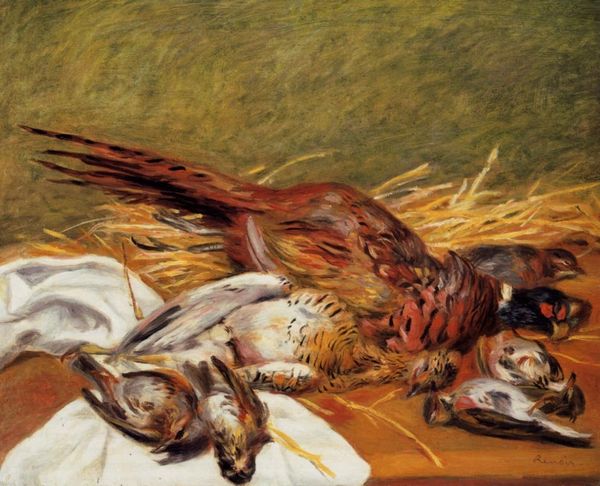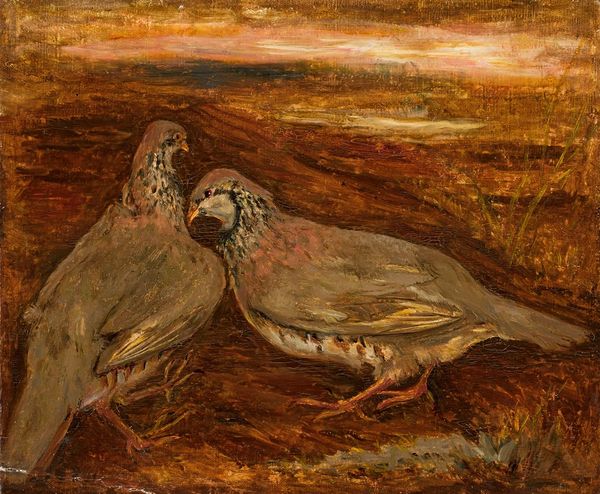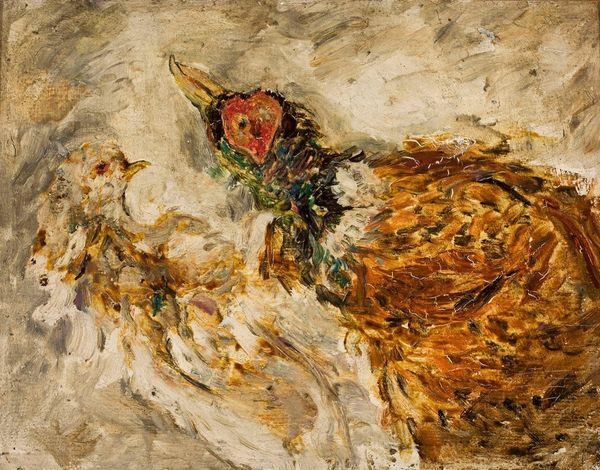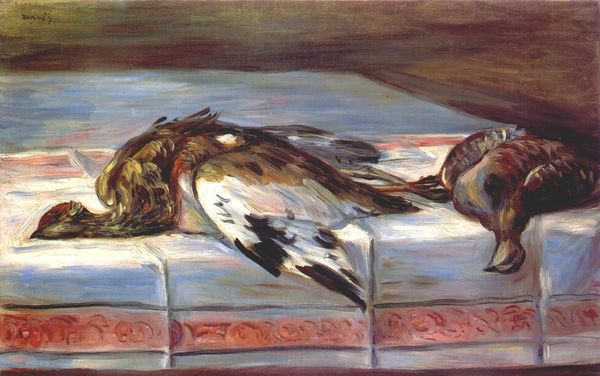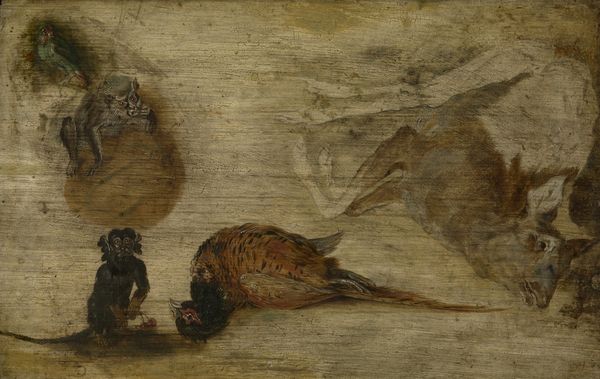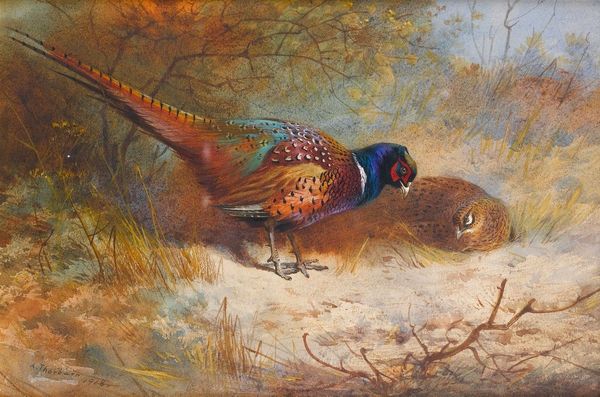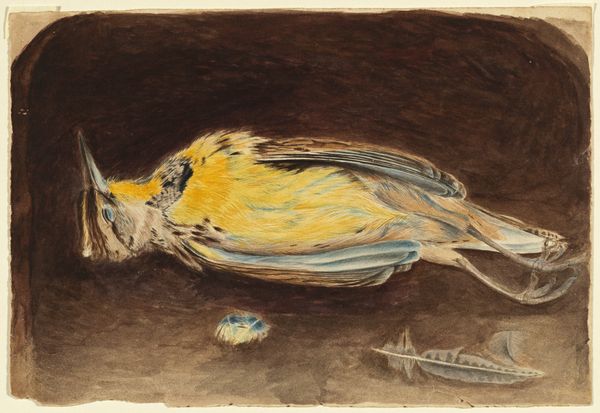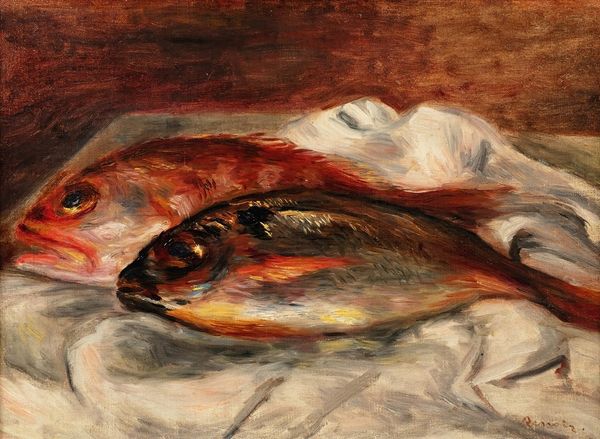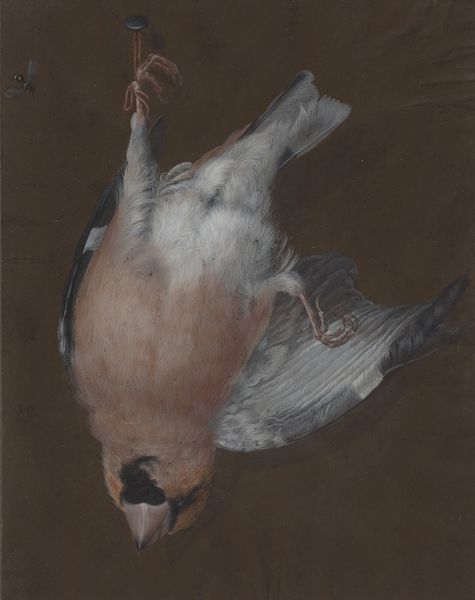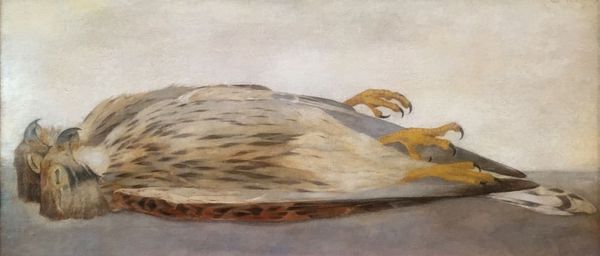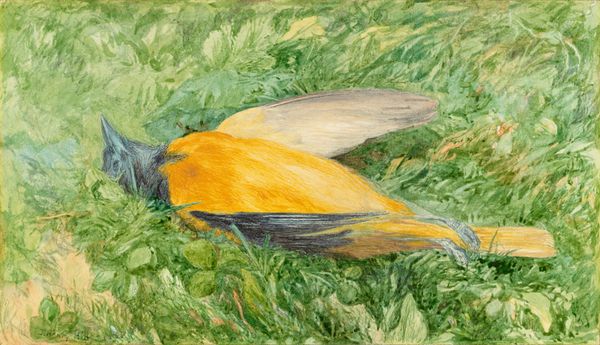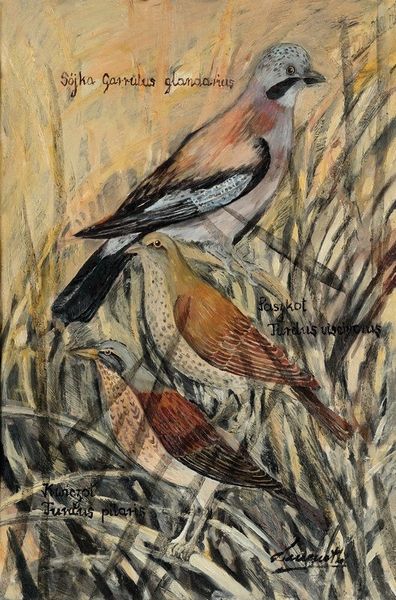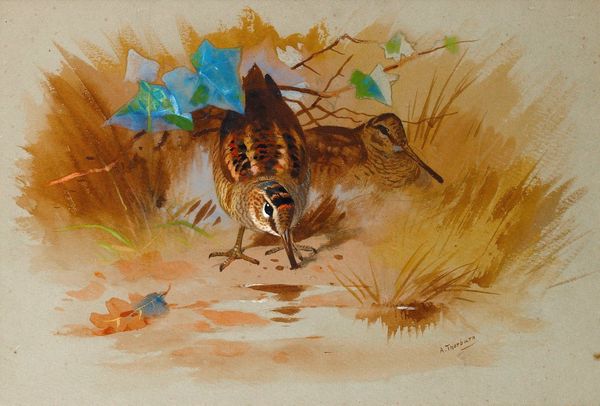
painting, oil-paint
#
animal
#
painting
#
oil-paint
#
oil painting
#
romanticism
#
pre-raphaelites
#
realism
Copyright: Public Domain: Artvee
Editor: Here we have "Dead Pheasants," an oil painting by Sir John Everett Millais. It’s…quite still. I’m struck by the realism of the feathers. What can you tell me about this piece? Curator: Let’s consider the materiality first. Oil paint allows for a certain richness and depth, but also a way to build up texture—look how Millais has replicated the individual barbs of the feathers, evoking the tangible nature of the birds' plumage. Think about the process involved in acquiring and preparing those pigments too. What might that tell us? Editor: I hadn't really thought about that. That kind of detail feels almost scientific. I guess it shows an understanding, or at least observation, of the subject, beyond just…eating it? Curator: Precisely! And let's think about the role of these birds in society at the time. These pheasants might well be destined for the table, perhaps gracing a wealthy household's dinner. Millais, part of the Pre-Raphaelite movement, was intensely interested in detail, which allowed for elevated painting with themes and messages. Editor: I see what you mean, so it's about representing luxury and consumption in some way? By showcasing their appearance in detail. I guess it contrasts sharply with other Pre-Raphaelite paintings focused on folklore, history and legends. Curator: Indeed. This intimate portrayal could spark conversation about the relationship of materiality to art and societal consumption of art and tangible goods. How the means and depiction connect both worlds. Editor: This has given me a lot to reflect on; it’s far more complex than a simple still life. Curator: Absolutely! By questioning the ‘how’ and the ‘why’ of its making, the art opens up discussions about labor, consumption and social hierarchies present at that time.
Comments
No comments
Be the first to comment and join the conversation on the ultimate creative platform.
